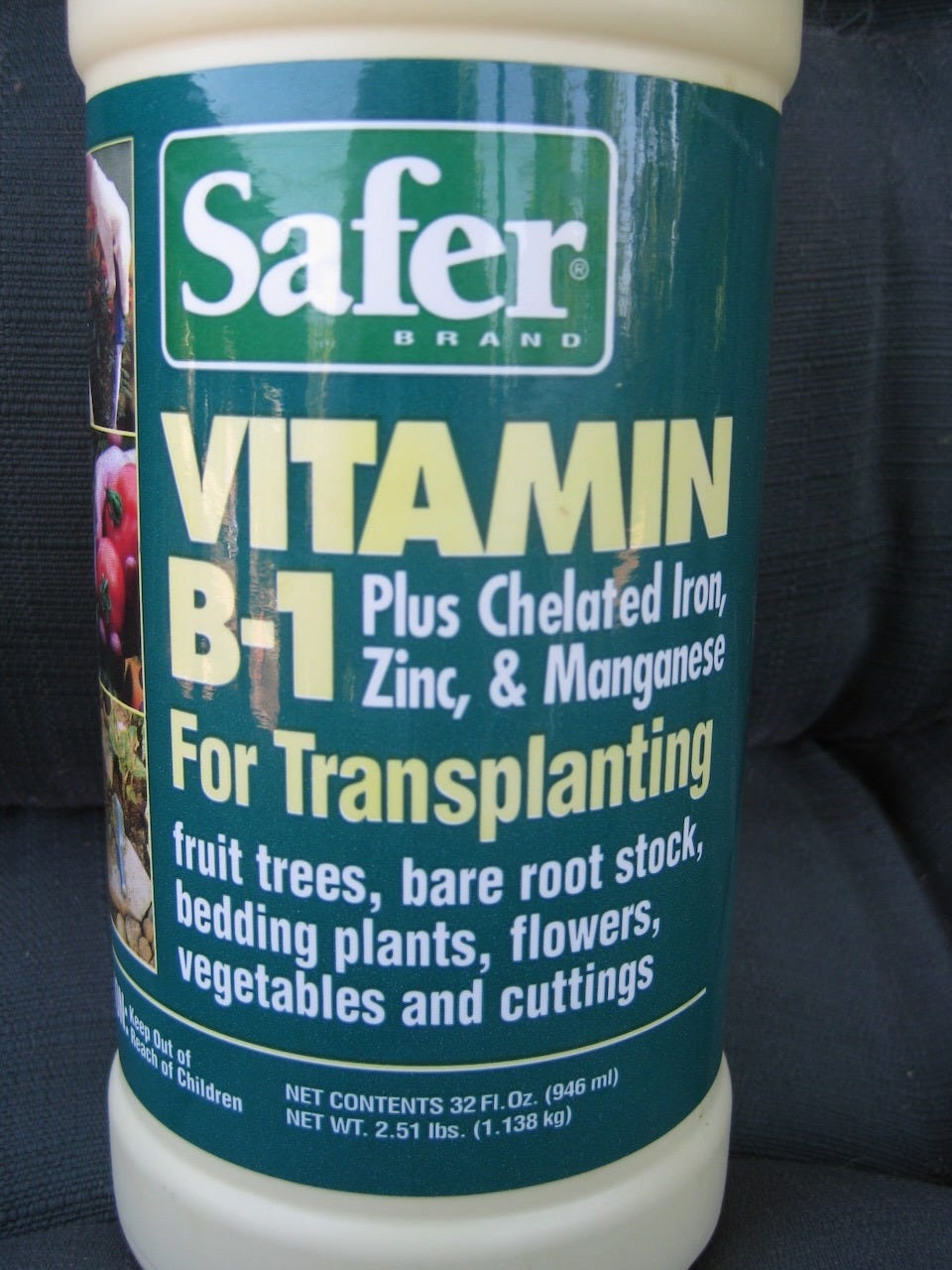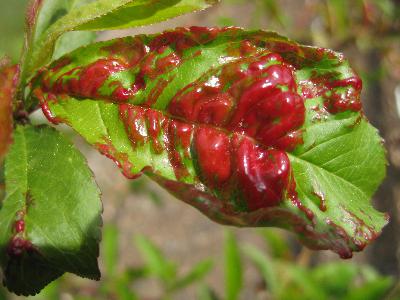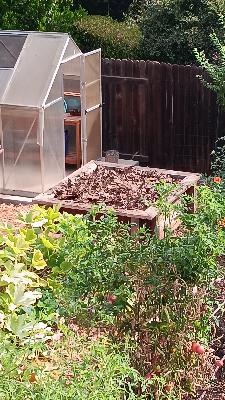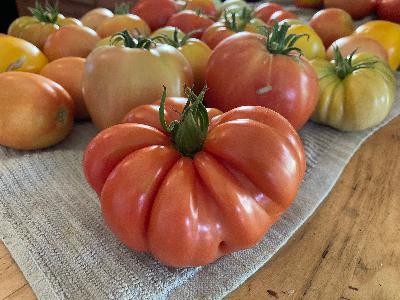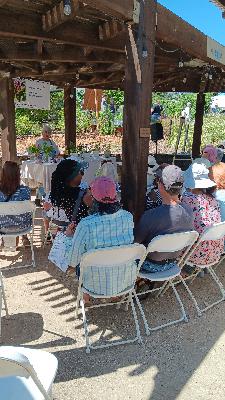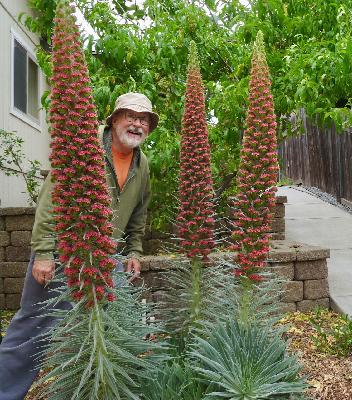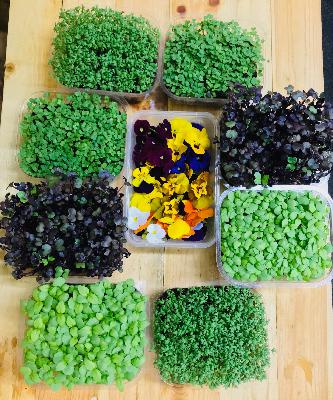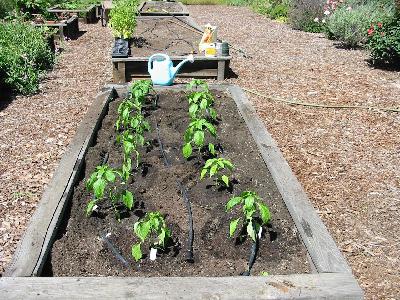Can Vitamin B1 Help New Garden Transplants?
Description
Beyond The Garden Basics with Farmer Fred is a reader-supported publication. To receive the complete posts, have access to over 200 previous editions, and help keep the good gardening information coming your way, please become a paid subscriber.
Early fall is for planting, as we are fond of saying. The days are cooler, and the soil is still warm. Those are ideal conditions for a healthy start of new cool season annuals, perennials, trees, and shrubs.
If you’re at the nursery this weekend checking out the latest in plants for your yard, you might just take a stroll down the garden chemical aisle. You may notice, on the shelf, a product of dubious value: Vitamin B-1. A typical label on such a bottle will tout its benefits for transplanting fruit trees, bare rootstock, flowers, vegetables and cuttings.
Gardeners, their parents and their grandparents have heard this refrain at nurseries for decades: “Get a bottle of B-1, it will help reduce transplant shock for that new plant you are buying.”The truth, though, is the same as it has been for nearly 90 years: it isn’t the Vitamin B-1 (thiamine hydrochloride) in the bottle that reduces transplant shock.
First a definition of “transplant shock” from Purdue University:
“Transplant shock is a term that refers to a number of stresses occurring in recently transplanted trees and shrubs. It involves failure of the plant to root well, consequently the plant becomes poorly established in the landscape. New transplants do not have extensive root systems, and they are frequently stressed by lack of sufficient water. Plants suffering from water stress may be more susceptible to injury from other causes such as the weather, insects, or disease. When several stresses are being experienced, the plant may no longer be able to function properly.”
And right there you have the answer to effectively reduce transplant shock: water correctly.
Thiamine exists in nature, produced for plants via leaves and sunlight. Plants, as well as soil microbes, create their own Vitamin B1. Thiamine is a cofactor (molecule that binds to an enzyme to help/allow it to function) important in the construction and break down of carbohydrates for growth or energy storage/release.
In the 1930’s, thiamine was shown to increase root development in plant tissue cultures - in the lab - especially in the dark. But those results couldn’t be replicated consistently in the field.
Research at the University of California has shown that the addition of Vitamin B-1 to a plant doesn’t make any difference at all.
Garden author Robert Kourik reported on his website: “The sun set on this persistent myth many years ago. Sunset Magazine reported in 1984 of studies which disproved the value of a vitamin B1 drench at transplant. Yet this horticultural “snake oil” still clutters many retail nursery shelves.
What does work in that bottle prominently labeled “B-1”: the other ingredients - usually micronutrients or auxins - might make a difference in roots and growth of new plants.
Back in the 1940’s, naturally occurring plant growth regulators, known as auxins, were isolated and tested. Auxins were found to stimulate cell elongation in roots and stem tissue. Bingo!
Around that time, a commercial product, Transplantone, was developed that contained auxins and thiamine. Later research showed that it was certain auxins, not the thiamine, that encouraged roots.
But the die was cast: gardeners got into the habit of getting vitamins for their plants.
What does stimulate root growth? A rooting hormone containing auxins such as Indole Butyric Acid, Naphthylacetic acid or Paclobutryzol.
Below the paywall:
What’s inside a bottle of Superthrive?
More information, including a transcript of today’s newsletter podcast, including more myth busting information about pot shards, landscape fabric, wood chips, and why you don’t want to pull out big weeds!
Remember: subscribers also have access to the entire back catalog of Beyond the Garden Basics newsletters and podcasts. $5 a month or $50 a year. If you learned something, tip me! Thanks.
One surprise that popped up in my research: the much-ridiculed Superthrive contains auxins...as well as, of course, Vitamin B-1. Anyone who has tried to pore through the densely hyperbolic endorsements on a Superthrive label looking for the ingredients, well...good luck.
However, I did find the ingredients on a 20 year-old, unused bottle of Superthrive sitting in my greenhouse. Is it the same formulation today? I don’t know. But seeing how they haven’t apparently changed the outside of the bottle much over the years, I have a feeling the insides are still the same.
The debate about the benefits of adding thiamine or other additives (including Superthrive) to plants still rage, with proponents citing research supporting their viewpoint.
Bottom line: The benefits of root formation contained in a bottle of Vitamin B-1 or any other additive product are the auxins, if any, that are included. Small amounts of nitrogen can also encourage root development. Other fertilizer ingredients that might be contained do not necessarily reduce transplant shock, but may provide other plant benefits. Putting the right plant in the right place, with healthy soil, along with the proper amount of sun, water and fertilizer, is all most gardeners need for success.
Today’s Newsletter Podcast Busts More Garden Myths
In today’s newsletter podcast (above), Linda Chalker-Scott tells us: “Vitamin B1 - thiamine - does not reduce transplant shock”, says Chalker-Scott, who is also the author of the book about horticultural myths, “The informed Gardener”.
“We tend to think of things in the context of what we do for ourselves, and especially when we take vitamin supplements - and many of us do take Vitamin B1 supplements,” says Chalker-Scott. “And so you just kind of extrapolate that and think, well, it must be good for the plants too. And what people don’t realize is plants make their own thiamine. So they certainly don’t need us to add that. iI’s just an extra cost and waste of resources.”
There could be other ingredients, such as small amounts of nitrogen, phosphorus, or potassium in that B1 bottle on the nursery fertilizer shelf that actually may be good for your plants, says Chalker-Scott. “Sometimes there’s also a hormone, usually an auxin, such as IAA, or NAA or something like that. And those actually do have a stimulatory effect on rooting, so that type of rooting hormone or transplant hormone actually does do some good. And so those mixtures of transplant elixirs, if they happen to have a little bit of that hormone, they will have an effect. But it certainly is not the B1 that does it.”
Today’s newsletter podcast is an interview with Linda Chalker-Scott who busts quite a few other garden myths, including:
• Putting pot shards or other material in the bottom of a potted plant container will improve drainage (it doesn’t).
• Using a breathable landscape fabric will keep the weeds out (Nope. Nor does that fabric remain able to move air and water through it for very long).
• Arborist wood chips can transfer diseases to your yard (we busted that myth here recently in the “Disease Triangle” edition of the Beyond the Garden Basics newsletter).
• Don’t yank out big weeds. Mow them as short as possible instead. Pulling destroys the soil structure.
• Adding sand to clay soil improves the drainage. (No. You’re making adobe bricks, unless you’re adding over 50% sand by volume to the total volume of existing soil.)
• Replacing native soil with potting mix in a new planting hole makes for a happier perennial, shrub, or tree. (No. It just leads to a pool of water that engulfs the plants’ roots for an extended period of time. (Sad, stinky, dying plant).
Give a listen to the podcast above for more details. You can find a transcript available towards the bottom of this newsletter.
Meanwhile, back at the B-1 nursery shelf…
“Research has shown that the addition of Vitamin B-1 to a plant doesn’t make any difference at all,” echoes Fran Clarke, a University of California lifetime Master Gardener and Community Forester for the Sacramento Tree Foundation. “One test showed that plants given Vitamin B-1 didn’t do as well as plants given just plain water. The benefits to a plant contained in a bottle of Vitamin B-1 are the small amounts of fertilizer that are included. Diluted liquid fertilizer or fish emulsion would accomplish the same task at a fraction of the cost of a bottle of Vitamin B-1.”
The addition of thiamine (Vitamin B-1) is unnecessary at transplanting time for another reason: plants, as well as soil microbes and organic mulch, manufacture their own Vitamin B1.
How did Vitamin B-1 end up on the garden shelf? Its history goes back generations. In the 1930’s, thiamine was shown to increase root development in plant tissue cultures (in the lab), especially in the dark. That success, though, could not be replicated in the field. Back in the 1940’s, naturally occurring plant growth regulators, known as auxins, were isolated and tested. Auxins were found to stimulate cell elongation in roots and stem tissue.
The benefits to a plant

